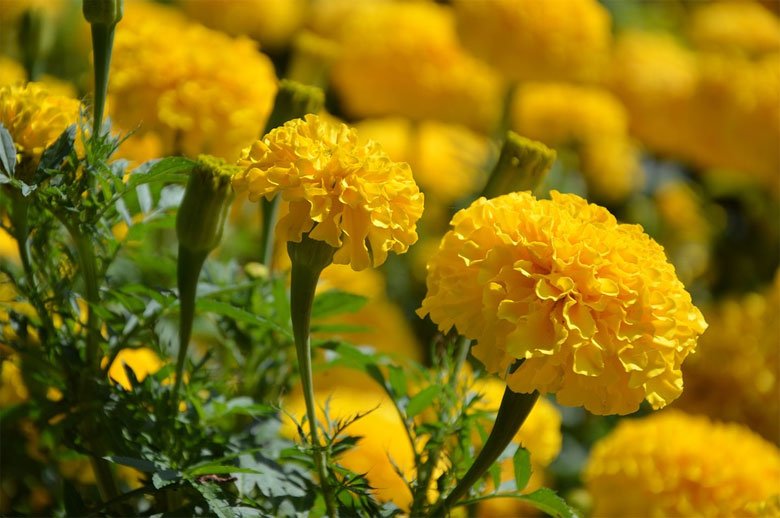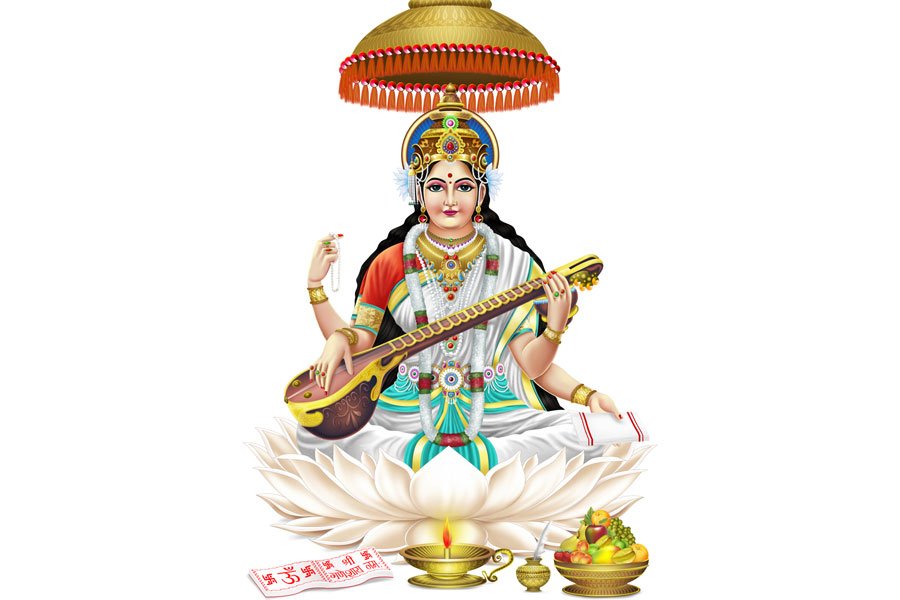
The last week of January brings a palpable air of excitement in Bengal, and it is not just the advent of spring, and the thrill of celebrating Holi 40 days from then. Saraswati Puja , this Basant Panchami season falls on 29 January 2020 , and what’s thoroughly heart-warming is the devotion with which the we celebrate the goddess of knowledge and shall we say, ummm.. love? ❤️ ❤️
Kolkata’s Much awaited Saraswati Puja
In Kolkata, Basant Panchami’s singular focus is worshipping Saraswati, the Goddess of knowledge, art & music, three cultural facets that are burned deep within the DNA of every Bengali, if you ask us. and is hence referred to as Saraswati Puja. Saraswati Puja traditionally falls between mid-January and first week of February (usually), just before the board exams and even Valentine’s Day. Parents fervent submissions to the Goddess of knowledge usually revolve around blessing their children for the upcoming board exams. The day begins with an aarti before the deity, followed by distributing traditional sweets to all.
For those who came in late, and those who thought they knew it all, here are 10 delightful facts about Saraswati Puja in Kolkata.
10 delightful facts about Saraswati Puja in Kolkata
Yellow is the Colour

There’s a splash of yellow all around on the occasion of Saraswati Puja. But do you know the reasoning behind everyone being clad in yellow? Entering into the spring season, the colour represents the seasons bloom. Yellow, quite evidently, spreads cheer and resonates with the brightness Goddess Saraswati kindles in the lives of her devotees. Devotees place yellow flowers before Saraswati Maa to appease her.
The season’s special Kooler Chutney
In December, Bengal witnesses the sprouting of a tropical berry which is called the Indian plum or Indian Jujube. Kids feast on this fruit and quite are forbidden from eating it until prayers are offered to Goddess Saraswati. Hence, on the occasion of Saraswati Puja, Kooler Chutney (Plum chutney) is prepared and served.
Saraswati Havan for Academic Success
Another of the ceremonial procedures associated with the Saraswati Puja is performing the Saraswati Havan. This ritual is diligently performed, but the purpose behind it is of utmost significance. Academic successes, heightened concentration, sharper memory, stronger communication skills and the clearance of obstacles are few of the many positive aftermaths that come from this practice.
Chanting the Saraswati Vandana Mantra

The celebration commences by chanting the Saraswati Vandana Mantra. Recital of it illumes the chanter’s mind, instills confidence and enhances the power of communication. Hence the time is almost here, so bow down and chant the Mantra with reverence.
“Sarasvati namastubhyam
Varade KAmarUpiNi
VidyArambham Karishyami
Siddhir Bhavatu Me SadA“
Translated, it means,
“O Goddess Saraswati; salutations to you, the giver of boons, the one who fulfils desires. I shall begin my studies. May there always be accomplishment for me.
Benevolence & Blessings for the Culturati
Apart from students, even people from creative fields seek the blessings of the deity. Because Saraswati Maa, along with being the Goddess of knowledge is also the Goddess of arts and crafts. Artists, students, musicians, writers or anyone who is striving for professional or academic upliftment seek her blessings. It might just bring about that turning point in your career.It isn’t unusual to find all knowledge imparting items like books, computers or music instruments placed beside the Goddess.
Vidyarambh, with Maa’s blessings
Education is the cornerstone of success in an individual’s life. Thereby in the course of the Saraswati Pooja one very important ritual is Hate Kori. This ritual entails seating little children in the Pandit’s lap, and etching their first letters on a black board with chalk. In W Bengal, this day is generally agreed upon by all for starting any new phase in their lives.
The Saffron & Sandalwood Adornment

Tilak (the coloured paste that’s applied on the forehead) is made using portions of saffron and sandalwood. As per Vedic references, this mixture is associated with the Vedic sage Brihaspati. Its application on Saraswati Maa and her devotees is considered propitious for monetary gains.
Happiness, Boondi Boondi mein
Among the many offerings made to Goddess Saraswati, one among her favourites is the yellow Boondi. This yellow colour is favoured due to its long standing association with Jupiter, the planet of knowledge. Hence, offering it fortifies the impact of Jupiter in one’s birth chart.
A Vegetarian Spread, fit for the Divine
The Puja celebration includes an all vegetarian fare, owing to the serenity and piousness that encircles Goddess Saraswati. The only trace of fish can be found in the Rangoli (design embellishment) that’s chalked out in front of the Goddess. It is considered to be auspicious.
From all of us at Howard Johnson Kolkata, here is wishing you a bountiful Basant Panchami and Saraswati Puja celebrations. May this festive season help you climb the next rung of the ladder in your academic and professional life.


